10 tips for capturing colorful autumn photos
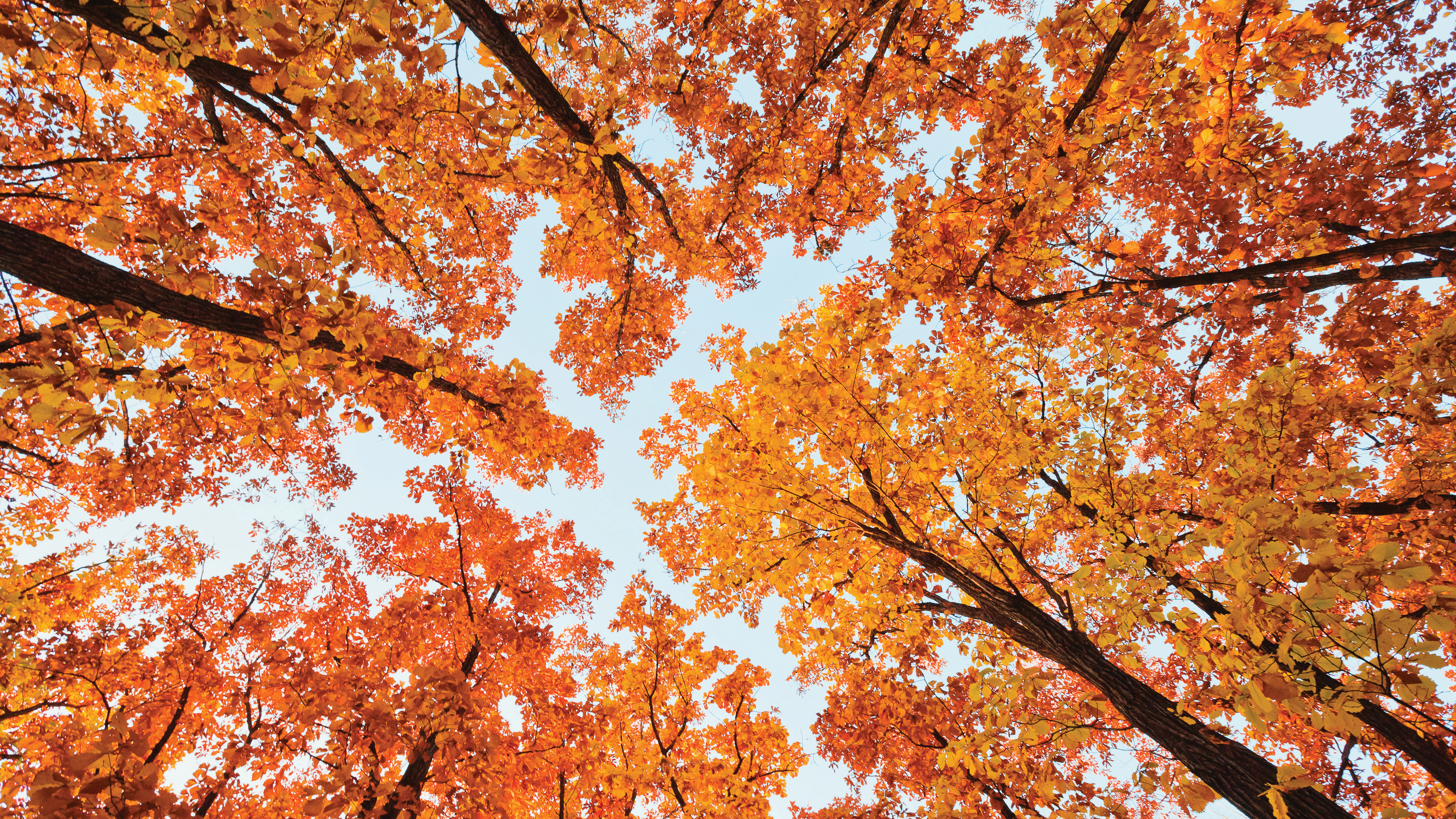
As summer gives way to autumn, as the days get shorter and nights get longer, and as T-shirts are exchanged for scarves and coats, many people begin to long for balmier days to come around again far too quickly.
Not so us photographers, for we know that autumn is the most photogenic of seasons: once-uniformly green trees turn a thousand shades of red, brown and yellow; misty mornings give landscapes an eerie, otherworldly feel; nature is at its most spectacular as animals make last-minute preparations for hibernation or put on dramatic displays.
So wrap up warm and get out among the elements with your camera. Here are ten ideas for easy autumn photography projects…
1. Stag silhouettes
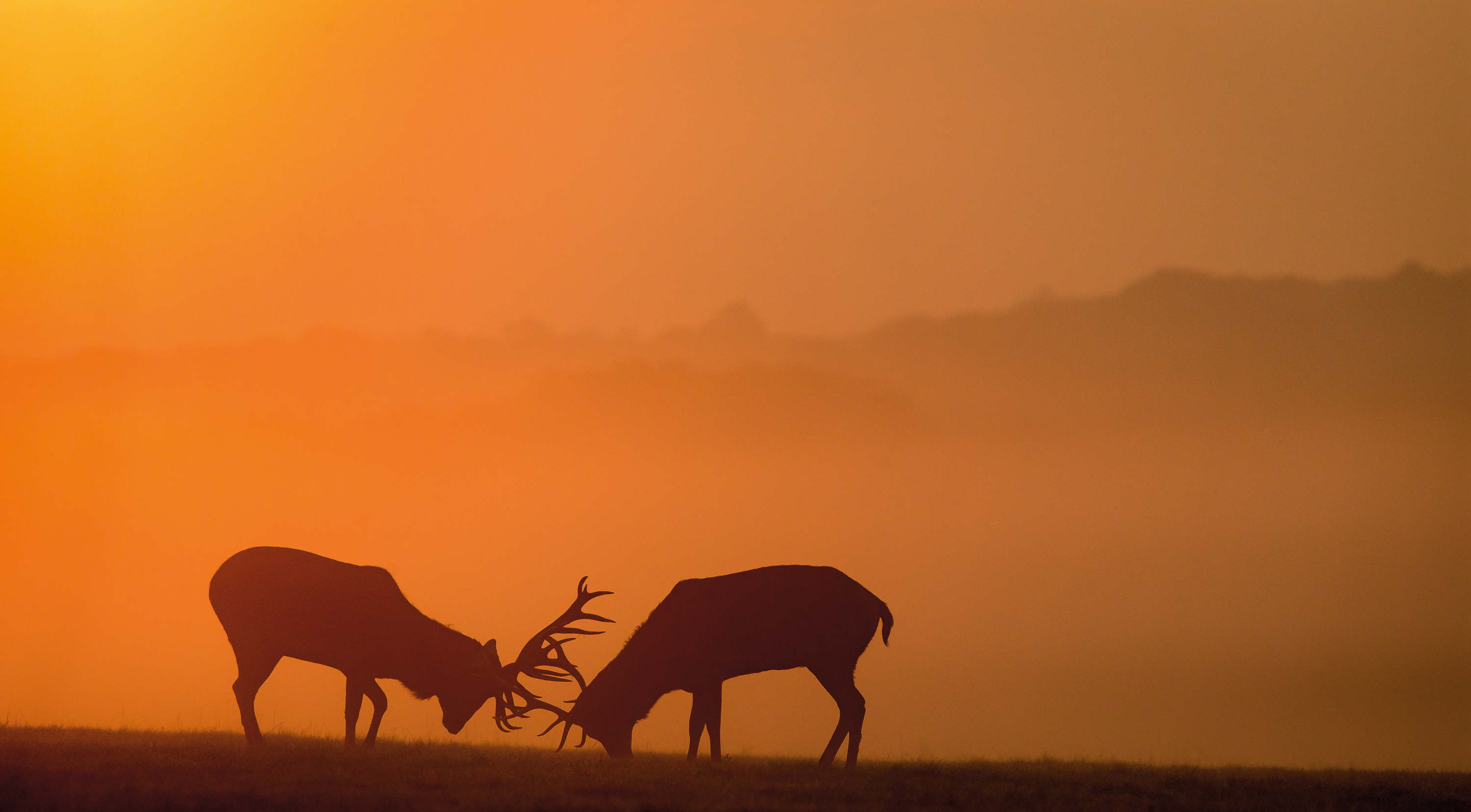
Autumn sees one of nature’s greatest spectacles – the rut. Stags lock antlers in ferocious battles as they compete for females in the September to November breeding season.
Shoot from a distance – more so for safety as to avoid scaring the deer off – as the creatures are pumped full of testosterone and attacks on humans are not unheard of. A long telephoto lens paired with a wide aperture helps separate deer from their background.
Another classic shot is to shoot into the light on an early, misty morning, exposing for the brighter sky so that the deer itself is in silhouette.
- Buying guide: Best super telephoto zoom lenses
2. Autumn portraits

For an autumnal portrait you can’t beat a model well-wrapped against the elements surrounded with russet-colored leaves. With a low sun in the sky, you’ll be able to get a well-lit shot without the need for flash or reflectors up until late morning or from early afternoon, by simply facing your models into the sun.
Sign up for breaking news, reviews, opinion, top tech deals, and more.
Throwing or kicking leaves up into the air adds a sense of fun and movement to the shot, it also gives people something to do, helping avoid a stilted pose. Set Aperture Priority mode on your camera and use a fairly shallow aperture – around f/4 – to ensure the model’s facial features are in sharp focus but to give a layered effect, so that leaves in the foreground and background become progressively out of focus.
Shooting from further back and zooming in with a short telephoto lens will further accentuate the effect. In autumn sunlight this should result in a fast enough shutter speed around 1/200sec to freeze the falling leaves, though a little bit of motion blur can add a sense of dynamism to the shot, too.
Take lots of shots as you’re bound to have plenty of duffers – with leaves in front of faces and so on – so set continuous drive mode and shoot in bursts. Pre-focus on the model’s face, but then switch to manual focus, or use the back-button focus technique, to prevent the camera inadvertently switching focus to a nearby leaf.
3. Luscious landscapes
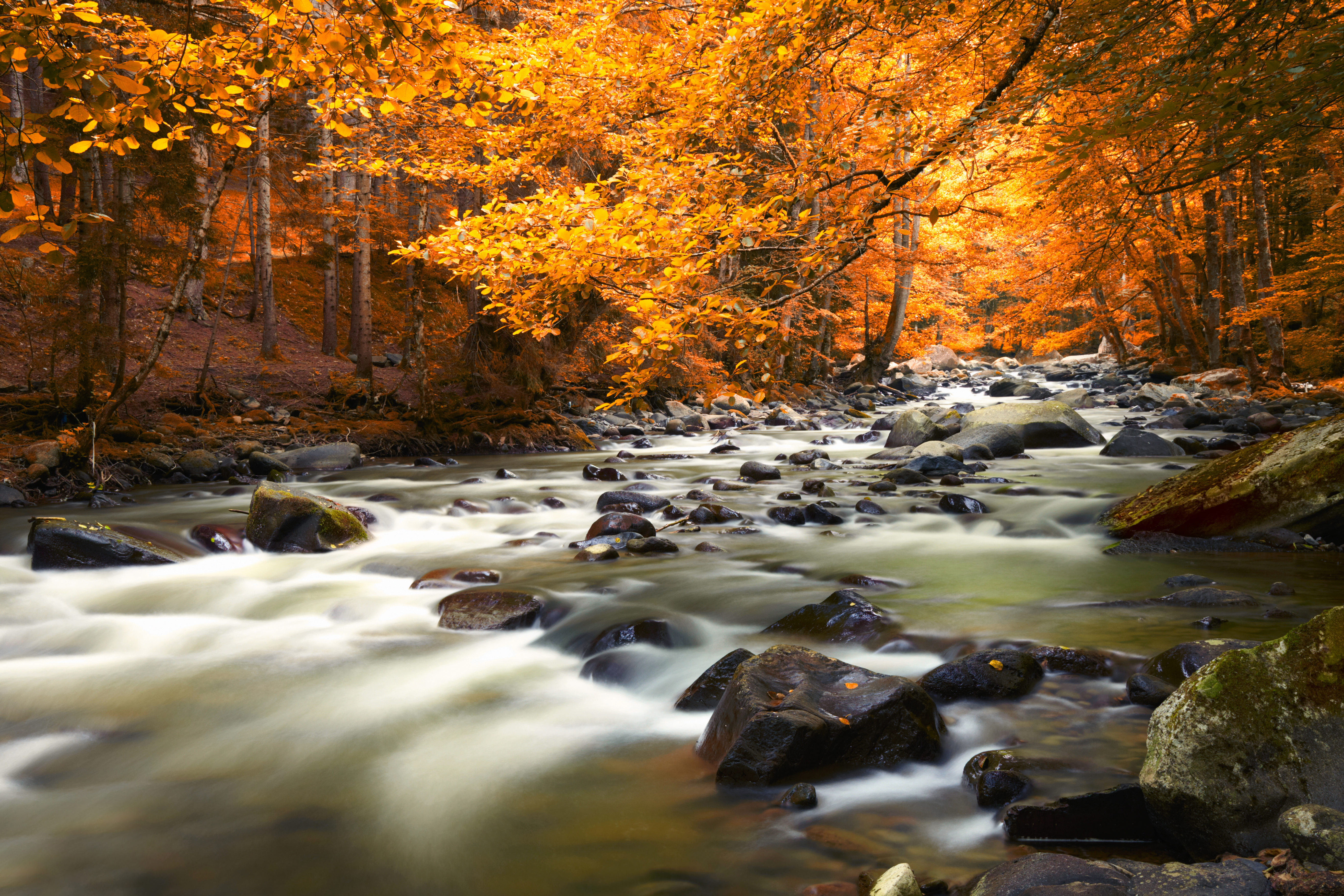
The golden hour – directly after sunrise or just before sunset – is a favourite time for photographers as light is blessed with a wonderful soft, warm quality as it’s filtered by particles in the atmosphere. The downside is that you have to get up at the crack of dawn to make the most of it…
But the great thing about autumn time is that sunrise gets later and later, particularly when the clocks go back at the end of October, so dragging yourself out of bed isn’t such a chore as it is in the summer months. The sun stays lower in the sky for longer too, meaning the ‘hour’ lasts a little longer.
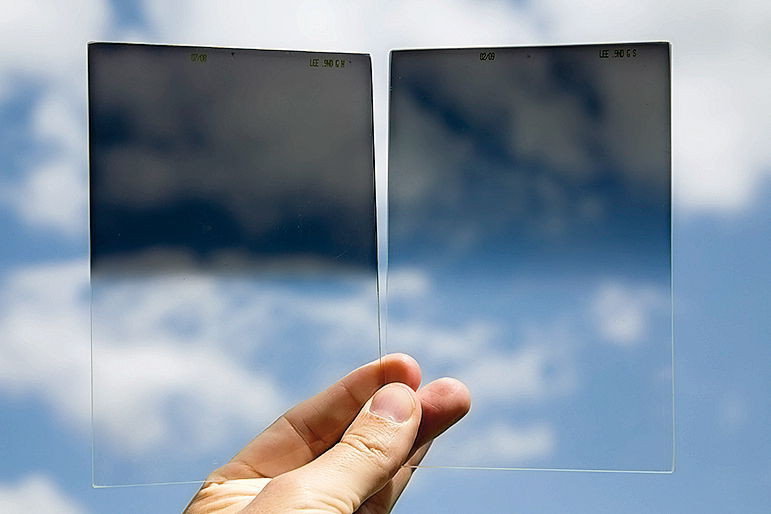
Shoot with the sun behind you to light up the landscape, to the side to capture elongated shadows, or into the sun for dramatic sunrises. A set of ND grad filters comes in handy, as the sky will be far brighter than the land below, leading to exposure problems.
Alternatively, take two exposures, one for the land and another for the sky, and merge them in Photoshop afterwards.
- Learn more: 21 essential landscape photography tips you need to know
- Buying guide: Best ND grad filters: 6 top models tested
4. Seasonal wildlife

Autumn can be a busy time for animals as they prepare for the winter months ahead when food is scarce. The trick is to learn the habits of your target species – at what time of day and where are they most active? With this established, it’s essential not to get too close – and that means a big telephoto lens of at least 300mm. A fast lens (eg f/2.8 or f/4) is a benefit for more skittish subjects too, and when you need to shoot in low light.
Generally, you’ll be shooting with your lens close to wide open to maximize the light, and to separate your subject from its background. It’s also important to get down to the eye level of your subject, for a far more intimate portrait, and to reduce empty foreground in your shots.
You can increase your success rate by encouraging hungry animals to come to you; set up a feeding station and resort to bribery by leaving food out.
- Learn more: 30 essential wildlife photography tips
- Buying guide: The best telephoto lenses
5. Morning mist

In early autumn, cold nights are often followed by warm days, and this big variation in temperature provides the ideal conditions for creating mist and fog; as night air cools, moisture in it condenses and then forms low-lying pockets of ground-hugging mist as the temperature rises.
All the same, it’s hard to predict with any certainty when the conditions will be just right for mist to form, and exactly where and how thick it will be. A cold, still night followed by a warm morning, with visibility dropping overnight, is a good indicator of mist forming.
Mist is at its most atmospheric around sunrise – and soon begins to evaporate and disperse, so your window of opportunity is limited. You’ll need to be at an elevated position; shooting into a valley, with trees or castle ruins poking out of the mist works well, as does shooting across low-lying fields, with foliage and distant hills breaking through the fog. Mist often forms over large bodies of water, so shooting over lakes is another good option.
You’ll need a tripod as you’ll be shooting at slow shutter speeds in the low dawn light. A long lens, such as a 70-200mm telephoto, compresses perspective and emphasizes the layered effect of mist. The relatively bright mist is likely to fool your metering system into underexposing, so check your histogram and apply around +1 stop of exposure compensation, as required.
- Learn more: How to predict the angle of sunrise
- Learn more: How to create mist
6. Reflections

Make the most of the abundant color in the landscape by doubling the rich autumn palette. You’ll need a high vantage point to shoot down to a lake to reflect as much of the scene as possible.
Ideal conditions are a calm windless day, so the surface of the water is as still as possible for a mirror-like reflection. Shoot with your back to the sun so that the landscape is illuminated to maximize the reflected color. If there’s an attractive blue sky, shoot wide to capture the shape of the mountaintops in the scene, but if it’s overcast then zoom in to focus on the landscape and foliage – and these conditions are handy for avoiding problems of glare bouncing off the water.
As you’re shooting from a distance, a mid-range aperture, around f/8, will give plenty of depth of field. A long exposure will smooth out any ripples, so use an ND filter. Plus, putting your camera on a tripod will keep it perfectly still over a long exposure, and aids in fine-tuning your composition, too.
- Buying guide: Best ND filters: 6 top models tested
7. Color in close-up
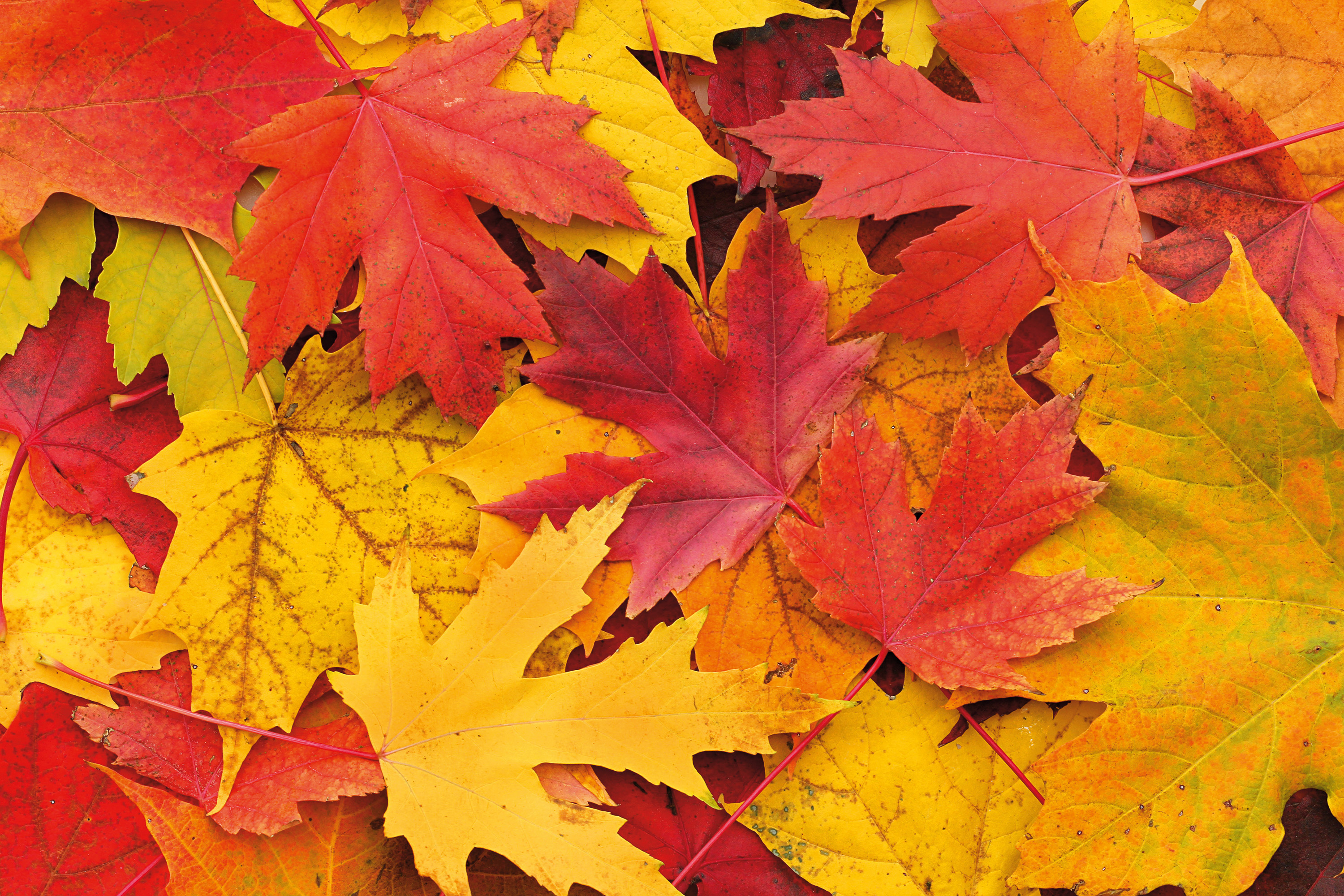
As leaves fall they turn beautiful multicolored shades and reveal their delicate structure of veins, making them perfect for close-up photography.
For larger-than-life detail, a macro lens is capable of projecting an image onto the sensor at actual size, though this will only project a portion of the leaf, so any lens capable of focusing reasonably close up will do to photograph a leaf in its entirety – or group of leaves.
Pop your camera on a tripod pointing straight down – a pivoting centre column is useful here – so that the plane of focus is as flat-on to the leaf as possible. Use Live View and Manual focus, and zoom in to 5x or 10x view and twist the focus ring until you achieve optimum focus.
Shooting up close reduces depth of field significantly, and even when shooting flat, lumps and bumps could fall out of focus. A mid-range aperture of f/8 to f/11 not only not only minimizes this, but your lens is likely to be at its sharpest too, vital for bringing out detail.
- Learn more: Macro lenses: how to choose one, and how to use it
- Buying guide: Best macro lenses
8. Still life

When the weather becomes so intolerable that even the most intrepid photographer has second thoughts about venturing outside, how about an autumn-themed still life shoot?
Set up a makeshift studio on your kitchen table. The best thing about still life is you’re completely in charge; you can position your subjects as you like, and have total control over lighting.
Set your camera on tripod and use Live View. This way you can fine tune your composition until it’s bang on. A narrow aperture ensures your whole scene is in focus, or try a shallow depth of field so that only the main subject of your scene is in focus; this is particularly effective when photographing food.
- Learn more: 52 photography projects to try
9. Firework displays
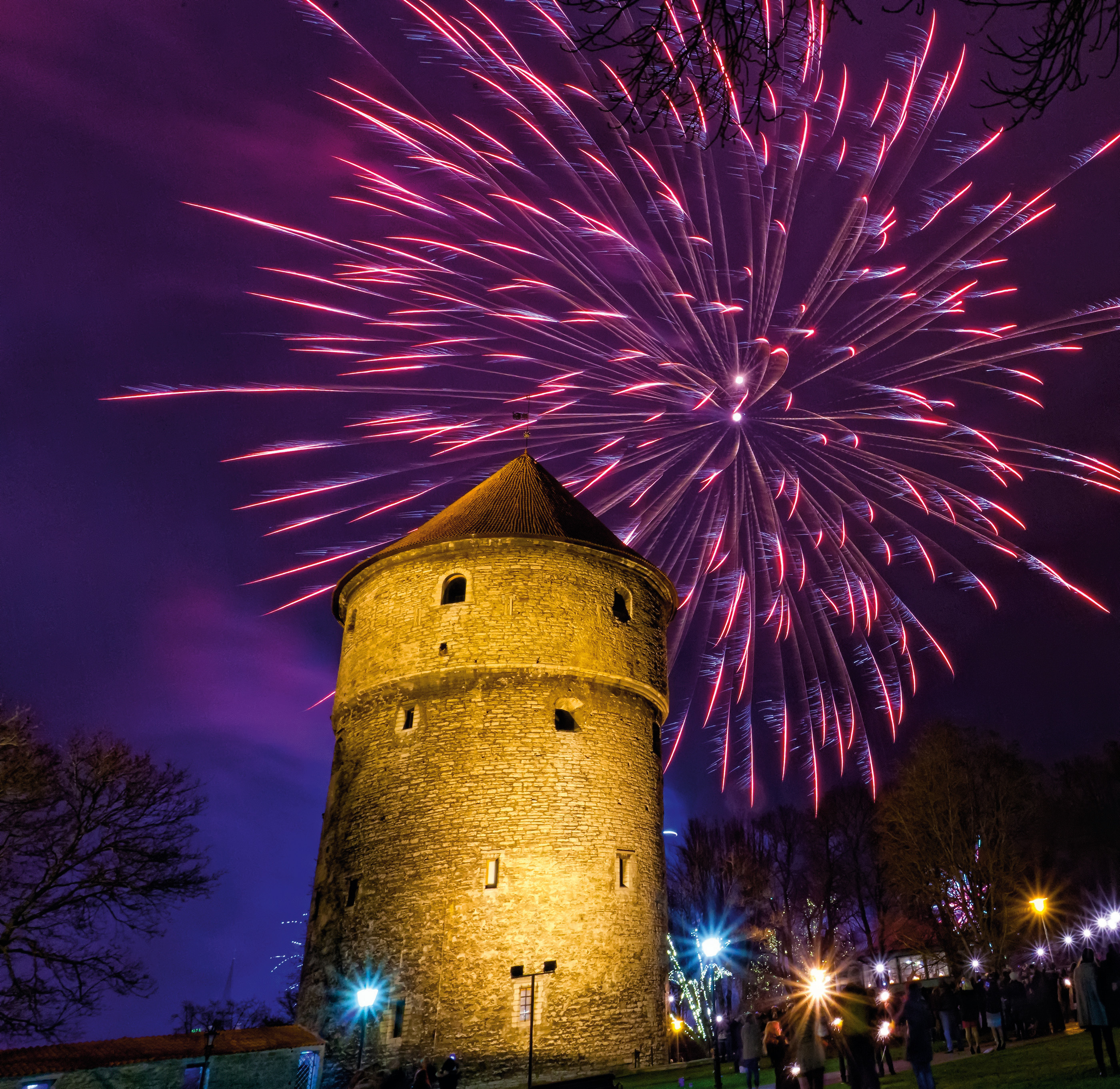
While the exploding pyrotechnics themselves look pretty, you’ll get better shots if you show them in context, so use the wider end of a standard zoom. Get set up before the fireworks start; you want to be upwind so smoke drifts away from the camera, and to pick a spot that will be out of the way of spectators so that they don’t obstruct your view, or bump the camera. Use a tripod and remote release – the self-timer is no good here as you’ll need hit the shutter at the precise moment.
Shooting wider than you need means you can crop in later. Autofocus on a building or other focal point, compose with this at the lower third of the frame, then switch to Manual focus so you’re not hunting in the dark. Take a separate shot of the building for merging later, so you don’t have to compromise exposure.
For the fireworks themselves, a mid-to-narrow aperture is best (f/11-f/16) as they are actually quite bright, and you’ll want to keep the shutter open for only 1-4 seconds to capture the exploding firework in full. Use Bulb mode, firing the shutter as the rockets streak skywards and closing it once the explosion is over. Check your exposures on the rear LCD and adjust the shutter opening time accordingly.
- Learn more: How to photograph fireworks in 7 easy steps
10. Contre-jour

One of the first lessons we learn in photography is to shoot with the sun over one shoulder so it illuminates the subject, but the lower and weaker autumn light lends itself to doing just the opposite.
‘Contre jour’ is French for ‘against daylight’ and involves shooting with subjects backlit against the sun’s rays. It’s particularly effective with autumnal leaves; as they turn colour they also become more translucent, so the sunlight reveals their structure. Alternatively a wider shot of the woods, the sunlight filtering through the tree trunks, can work well too. Or how about getting down low and shooting toadstools so the sun creates an attractive rim light that wraps around the edges of the subject.
You’ll need to shoot in the morning or afternoon but when the sun is fairly high to provide strong backlighting. It’s usually best to make sure that the sun itself is at least partially blocked by the subject to avoid it being completely burnt out. Use Photoshop after to reveal detail in shadows and highlights.

Phil Hall is an experienced writer and editor having worked on some of the largest photography magazines in the UK, and now edit the photography channel of TechRadar, the UK's biggest tech website and one of the largest in the world. He has also worked on numerous commercial projects, including working with manufacturers like Nikon and Fujifilm on bespoke printed and online camera guides, as well as writing technique blogs and copy for the John Lewis Technology guide.